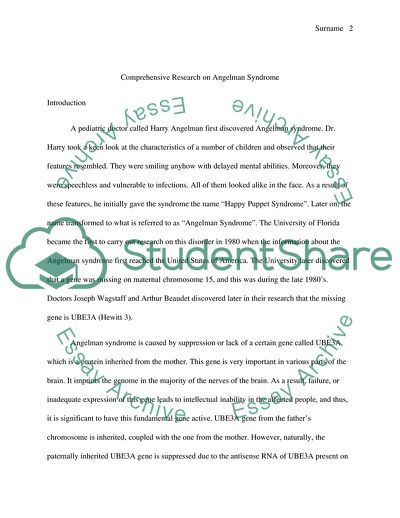Cite this document
(Angelman Syndrome Research Paper Example | Topics and Well Written Essays - 1750 words, n.d.)
Angelman Syndrome Research Paper Example | Topics and Well Written Essays - 1750 words. https://studentshare.org/health-sciences-medicine/1812062-research-report-angelman-syndrome
Angelman Syndrome Research Paper Example | Topics and Well Written Essays - 1750 words. https://studentshare.org/health-sciences-medicine/1812062-research-report-angelman-syndrome
(Angelman Syndrome Research Paper Example | Topics and Well Written Essays - 1750 Words)
Angelman Syndrome Research Paper Example | Topics and Well Written Essays - 1750 Words. https://studentshare.org/health-sciences-medicine/1812062-research-report-angelman-syndrome.
Angelman Syndrome Research Paper Example | Topics and Well Written Essays - 1750 Words. https://studentshare.org/health-sciences-medicine/1812062-research-report-angelman-syndrome.
“Angelman Syndrome Research Paper Example | Topics and Well Written Essays - 1750 Words”. https://studentshare.org/health-sciences-medicine/1812062-research-report-angelman-syndrome.


